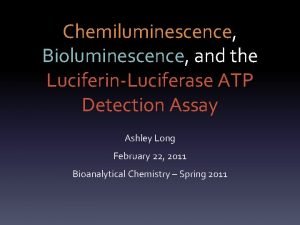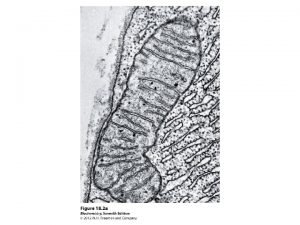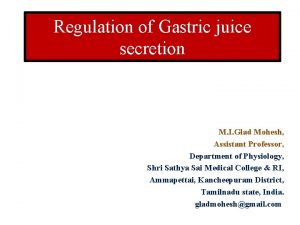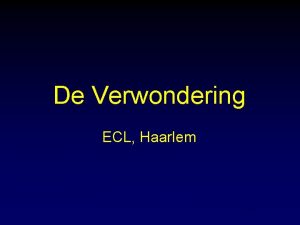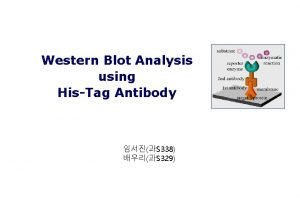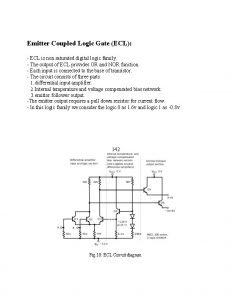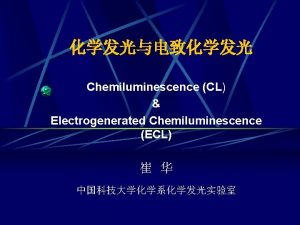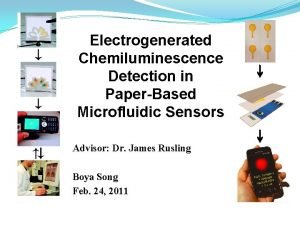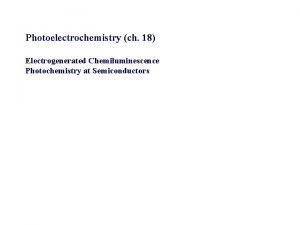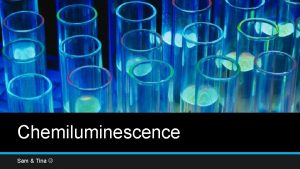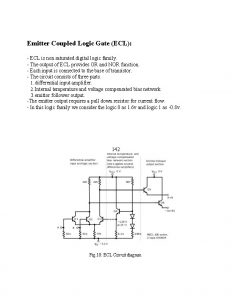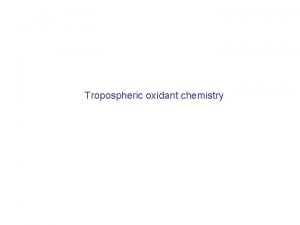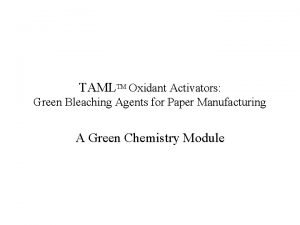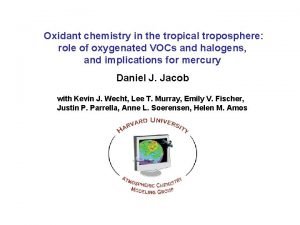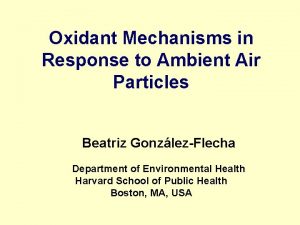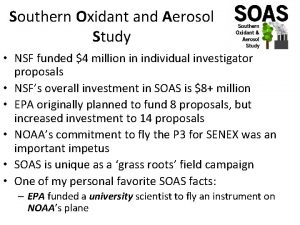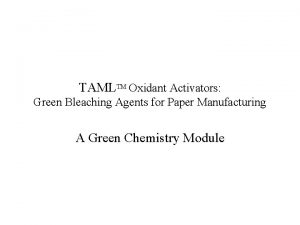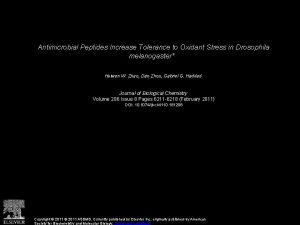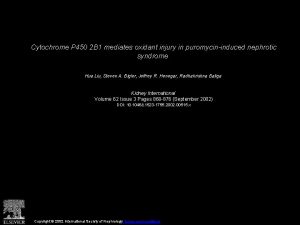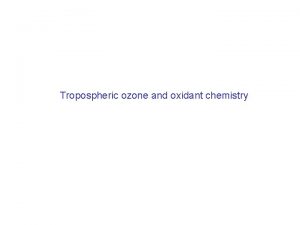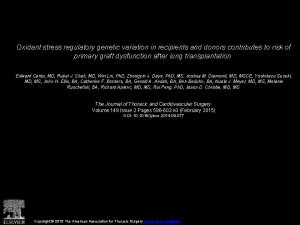Chemiluminescence CL Electrogenerated Chemiluminescence ECL luminol OXIDANT 3








































































- Slides: 72

化学发光与电致化学发光 Chemiluminescence (CL) & Electrogenerated Chemiluminescence (ECL) 崔 华 中国科技大学化学系化学发光实验室
















液相化学发光反应 鲁米诺 (luminol) OXIDANT * 3 -APA + BASE h luminol 3 -Aminophthalate max = 425 nm 氧化剂: H 2 O 2 KMn. O 4 Na. Cl. O I 2 [Fe(CN)6]3 -. 催化剂: 过氧化酶 氧化血红素 过渡金属离子(Co 2+、 Cu 2+、Fe 3+) 抑制剂




吖啶酯 The molecular structure of the used acridinium ester NHS Mechanism of Acridinium Salt Chemiluminescence with hydrogen peroxide Org. Lett. (2003) 21: 3779– 3782

1, 2 -二氧杂环丁烷类 • Alkaline phosphatase (ALP) dephosphorylates AMPPD (1, 2 -二氧杂环丁烷类) to form a dioxetane anion, which fragments into adamantanone (金刚烷酮)and the excited state of methyl meta-oxybenzoate anion (间氧苯甲酸甲酯阴离子), the light emitter. • The detect limit of ALP is 10 -21 mol/L. • The derivatives of AMPPD are superior than the parent compound to the lighting rates and signal intensities.

萤火虫发光 (firefly BL) max = 562 nm 此反应重要的分析对象是ATP 10 -11~10 -14 mol











鲁米诺的ECL on a rotating ring (Au)-disc electrode (Au) system disc: OOH ring: OOH O 2 LH L negative pulse positive pulse


Ru(bpy)32+的ECL Ru(bpy)32+ + e → Ru(bpy)3+ Ru(bpy)3 2+ - e → Ru(bpy)33+ 电极还原 电极氧化 Ru(bpy)3+ + Ru(bpy)33+ → Ru(bpy)32++ Ru(bpy)32+* → Ru(bpy)32+ + h ( λ = 620 nm)


Ru(bpy)32+ - S 2 O 82 - 体系的发光反应机理: Ru(bpy)32+ + e → Ru(bpy)3+ S 2 O 82 - + e → SO 42 - + SO 4. - + Ru(bpy)3+ → Ru(bpy)32+* + SO 42 SO 4. - + Ru(bpy)32+ → Ru(bpy)33+ + SO 42 Ru(bpy)3+ + Ru(bpy)33+ → Ru(bpy)32+ + Ru(bpy)32+* → Ru(bpy)32+ + h

吖啶酯的ECL Possible ECL mechanism of AE in alkaline aqueous in the presence of TPA Anal. Bioanal. Chem. (2011) 399: 3451– 3458



分析化学应用 一、 流动注射化学发光分析 Hua Cui , Shifeng Li, Xiangqin Lin Chemiluminescence of Ce (IV) and surfactant Tween 20 Analyst, 2001, 126, 553 Hua Cui , Shifeng Li, Feng Li, Yugang Sun, Xiangqin Lin A novel chemiluminescent method for determination of salicylic acid in bactericidal solutions Analytical and Bioanalytical Chemistry, 2002,372,601

A novel method for determination of salicylic acid by use of Ce(IV)-Tween 20 chemiluminescence reaction Hua Cui, Shifeng Li, Feng Li, Yugang Sun, Xiangqin Lin Department of Chemistry, University of Science & Technology of China, Hefei, Anhui 230026, P. R. China

Ce(IV) + Tween 20 + H+ CL salicylic acid enhanced the CL Fig. 1 Chemiluminescence spectra (a) Ce 4+ + Tween 20 ; (b) Ce 4+ + Tween 20 + salicylic acid max = 478 nm

Fig. 2 Kinetic Curves Tween 20: 8%(v/v) SA: 4. 0 10 -7 g/m. L Ce 4+: 8 10 -5 mol/L (0. 1 mol/L H 2 SO 4) (a): Ce 4+ + Tween 20 (b): Ce 4+ + Tween 20 + salicylic acid

Flow injection system Fig. 3 ml/min 2. 9 Tween 20 Sample 2. 9 Flow cell H 2 O 2. 9 Ce 4+ Waste Peristaltic pump

Working curve and detection limit Regression equation lg I 6. 65 0. 75 lgc (r 0. 9983) Linear range 4. 0 10 -9 ~ 1. 1 10 -6 g/ml Detection limit 2. 5 10 -9 g/ml (S/N 3) Standard deviation: 0. 85% (n=11)

Application Table 3 The determination of salicylic acid (SA) in bactericidal solution(n 6) Sample SA found (10 -7 g/ml) RSD (%) This method Ref *1 1 2 3 0. 82 0. 79 1. 78 1. 80 2. 67 2. 64 SA added (10 -7 g/ml) SA recovery 1. 50 1. 56 103. 8 1. 50 100. 1 1. 52 100. 8 1. 1 1. 2 0. 6 *Ref: UV-Spectrophotometry (10 -7 g/ml) (%)

CL mechanism Who is the emitter? Reduction product of Cerium (IV)? Ø Cerium (III), which is formed by the reduction of cerium (IV), is a well known fluorescent ion and therefore is a possible CL emitter. Ø Cerium (III) em= 355 nm Ø CL reaction = 478 nm Ø Cerium (III) is unlikely to be the emitter

Oxidation product of Tween 20? Ø It is postulated that an oxidation product of Tween 20 is an emitter. If the oxidation product is stable, it should be detectable at 478 nm in fluorescent spectra of the CL reaction mixture. However, no peak was observed at 478 nm in the fluorescent spectra. Ø The result indicated that the emitter may be involved in the subsequent reactions or other species may be the emitter.

Other species? Ø Tween 20 molecules contain several hydroxy group. The oxidation of some polyhydric phenols such as pyrogallol and gallic acid with molecular O 2 or H 2 O 2 in alkaline medium were reported to give weak CL. Emission spectra show two peaks with maxima at 475505 nm and 635 nm. A CL mechanism involving emission from singlet oxygen and intermolecular energy transfer has been proposed:

(O 2(1 g))2 2 O 2(3 g-) + h = 643 nm O 2(1 g) O 2(1 g-) 2 O 2(3 g-) + h = 478 nm O 2(1 g) O 2(1 g+) + P 0 2 O 2(3 g-) + 1 P* P* P + h = 475 -505 nm

Therefore, it is likely that the CL reaction formed singlet oxygen 1 O 2* and the emission was from excited oxygen molecular pairs O 2(1 g) O 2(1 g-).

Pathways The formation of singlet oxygen 1 O 2* in this reaction may be from three possible routes: Ce 4+ + Tween 20 Ce 3+ + X X 1 O 2* + X 1 O * 3 O + h 2 2 X + O 2 dis (O 2__X) 1 O 2* + X 1 O * 3 O + h 2 2 X + O 2 dis (1 O 2 --X) * 3 O 2 + X + h (1) (2) (3)

Analytical potential For the determination of SA, the interferences from some polyphenols were observed. Is it possible to use the CL reaction for the detection of other compounds? The Effects of some polyphenols and anilines on the CL reaction were examined.

Table 4 The effect of some polyphenols and anilines Organic Compounds* Salicylic acid +773 Chlorogenic acid +31 Sulphosalicylic acid +797 Ascorbic acid +28 2, 4 -Dihydroxybenzoic acid +557 2, 4 -Dinitrophenol ** Phloroglucinol +408 Benzoic acid ** m-Nitrophenol +326 Tannic acid -88 Resorcinol +296 Gallic acid -91 p-Hydroxybenzoic acid +276 4 -t-Butylpyrocatechol -92 o-Nitrophenol +115 Pyrogallol -127 Phenol +96 Dopamine -42 Rutin +80 Aniline ** Catechol +73 p-Phenylendiamine ** 3, 4 -Dihydroxybenzoic acid +69

Table 5 Parameters of regression equations and detection limits for polyphenols Organic Compounds Linear range (ng/ml) Regression equation Correlation Coefficient Detectio n Limit (ng/ml) Salicylic acid 4 ~ 1100 lg I 6. 65 0. 75 lg. C 0. 9983 2. 5 Sulphosalicylic acid 40 ~ 8000 lg =6. 73+0. 75 lg. C 0. 9987 7. 5 2, 4 Dihydroxybenzoic acid 12 ~ 6200 lg =5. 84+0. 66 lg. C 0. 9946 9. 0 Phloroglucinol 63 ~1000 lg =6. 42+0. 76 lg. C 0. 9960 48




FI- ECL流路 Peristaltic pump PBS 2. 0 TPr. A or C 2 O 42 - 2. 0 Ru(bpy)32+ 2. 0 I /O A/D D/A RE CE WE Computer Cell 1. 9 PMT H 2 O Potentiostat ml/min Sample Waste I /O Luminometer




PBS浓度的影响 Effect of PBS concentrations on I of the two FI-ECL systems a:Ru(bpy)32+ - TPr. A – 肾上腺素体系, Ru(bpy)32+: 2. 0 10 -5 mol/L, TPr. A: 1. 0 10 -4 mol/L, PBS: 0. 1 mol/L ( p. H 8) , 肾上腺素: 1. 0 10 -6 mol/L; b:Ru(bpy)32+C 2 O 42—肾上腺素体系, Ru(bpy)32+: 2. 0 10 -5 mol/L, C 2 O 42 -: 5. 0 10 -4 mol/L, PBS: 0. 2 mol/L ( p. H 5. 4), 肾上腺 素: 2 10 -6 mol/L; 电极 电位=1. 05 V (vs. Ag/Ag. Cl) a b

p. H影响 a Effect of p. H value on I of the two systems 其他条件同 前 a 和b b

肾上腺素测定的回归方程 ECL system Ru(bpy)32+/TPr. A Linear range (mol/L) 2 10 -8 - 1 10 -4 Log( I)=5. 935+0. 587 log. C Correlation coefficient r=0. 995 - 5 10 -7 - 1 10 -5 Log( I)=2. 580+0. 133 log. C r=0. 991 Ru(bpy)32+/C 2 O 42 Regression equation

针剂样品中肾上腺素的测定结果 Sample Adrenaline found (mg/ml) RSD (%) This method Ref. value Added value Recovery (10 -7 mol/L) (%) Ru(bpy)32+/TPr. A 1. 04 1. 00 2. 14 5 4. 57 91. 4 - 1. 02 1. 00 1. 80 5 4. 90 98 Ru(bpy)32+/C 2 O 42

电致化学发光生物传感器 葡萄糖传感器 GDH -D-glucose + NAD+ -D-gluconolactone + NADH + H+ -D-gluconolactone + H 2 O D-gluconic acid GDH-glucose dedydrogenas Ru(bpy)32+ → Ru(bpy)33+ + e Ru(bpy)33+ reductant Ru(bpy)32+* → Ru(bpy)32+ + h ν

Photometer Recorder Auto-Sampler PMT Pump GDH-IMER Buffer Flow Cell Potentiostat ECL flow system 电极: WE: Pt RE: Ag/Ag. Cl CE: stainless-steel Waste

电极制作 Pt Pretreatment 25µl 2. 5%Nafion Dry 30 min 0. 1 M H 2 SO 4 30 min 0. 1 M H 2 SO 4, 1 h 10 m. M Ru(bpy)32+ 30 min Enzyme immobilization Pore glass (CPG) CPG aminoalkylsilane glularaldehyde GDH 0. 1 M PBS

Thank you!
